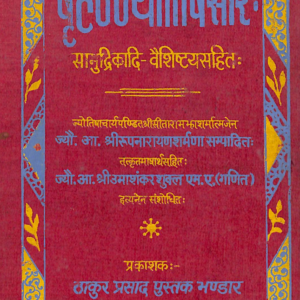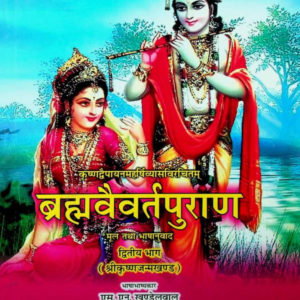Author: Venkatesa Sarma in the 13th Century A.D.
About the Author:
Venkatesh Sharma, also known as Venkatesha or Venkateswara, is a renowned figure in the field of Vedic astrology (Jyotisha). He is best known for his seminal work, “Sarvartha Chintamani,” which is considered one of the most authoritative and comprehensive texts on predictive astrology. This text is highly regarded for its detailed and systematic approach to horoscope interpretation and prediction.
Life and Background
Historical Context:
- Venkatesh Sharma is believed to have lived during the medieval period in India, though the exact dates of his life are uncertain. He is thought to have been active around the 13th to 14th century CE. His work indicates a profound understanding of astrological principles and a deep commitment to the field of Jyotisha.
Astrological Tradition:
- Venkatesh Sharma was part of the rich tradition of Vedic astrology, which involves the study of celestial bodies and their influence on human affairs and natural events. His contributions are seen as part of a long lineage of astrological scholarship aimed at codifying and elucidating the principles of Jyotisha.
Major Work: Sarvartha Chintamani
Overview:
- “Sarvartha Chintamani,” which translates to “The Gem of All Desires,” is Venkatesh Sharma’s most famous work. It is considered one of the classic texts in Vedic astrology and remains a fundamental resource for astrologers seeking to deepen their understanding and refine their predictive techniques.
Key Themes and Teachings:
- Interplay of Planets and Houses:
- Venkatesh Sharma emphasizes the intricate interplay between planets and houses in a horoscope. He provides detailed descriptions of how planetary positions and aspects influence different areas of life.
- Comprehensive Analysis:
- “Sarvartha Chintamani” is noted for its thorough and systematic approach to horoscope analysis. Venkatesh Sharma covers all aspects of astrology, from the fundamentals to advanced predictive techniques.
- Practical Application:
- The text is designed to be practical and user-friendly, making it accessible to both novice and experienced astrologers. Venkatesh Sharma’s clear explanations and systematic methods provide valuable tools for accurate and insightful predictions.
- Balance of Fate and Free Will:
- Venkatesh Sharma integrates the concept of karma into his astrological teachings, suggesting that while planetary influences are significant, individuals also have the capacity for free will and self-determination. He advocates for the use of astrological remedies to mitigate adverse effects and enhance one’s life path.
Influence and Legacy
Astrological Community:
- “Sarvartha Chintamani” has become a cornerstone text in the study and practice of Vedic astrology. Its detailed and systematic approach has made it a standard reference for astrologers seeking to deepen their knowledge and refine their predictive skills.
Educational Impact:
- The text is widely used in the education and training of astrologers. Its comprehensive coverage and practical insights make it an essential resource for students and practitioners of Jyotisha.
Cultural Significance:
- Vedic astrology remains an integral part of Hindu culture, influencing various aspects of life such as marriage, career, health, and spirituality. Venkatesh Sharma’s contributions have helped preserve and propagate this ancient knowledge, ensuring its continued relevance in contemporary society.
Conclusion
Venkatesh Sharma, through his seminal work “Sarvartha Chintamani,” has made significant contributions to the field of Vedic astrology. His detailed and systematic approach to astrological interpretation has provided valuable insights and practical tools for generations of astrologers. The enduring legacy of his teachings reflects his profound understanding of Jyotisha and his dedication to advancing the field. Venkatesh Sharma’s work continues to inspire and guide practitioners, preserving the rich tradition of Vedic astrology for future generations.






